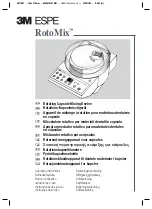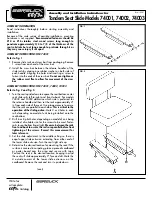
Acquisition and Waveform Setup
R&S
®
RTM20xx
18
User Manual 1317.4726.02 ─ 01
If you use passive probes, remember some recommendations:
●
Use a probe recommended for your oscilloscope model.
●
Use a ground lead as short as possible to minimize the effect of ground lead induc-
tance. The resonance frequency can be much lower than the system bandwidth and
thus can affect the measurement results, in particular, if you measure steep edge rise
times.
●
Select a probe that has a bandwidth of 5 to 10 times the highest frequency being
measured. This will preserve the harmonics and thus the waveform integrity.
Active voltage probes - general
Active probes require operating power from the instrument and have a proprietary inter-
face to the instrument. Their main qualities are:
●
Low loading on signal source
●
The probe is automatically recognized by the instrument, no adjustment is required.
●
Adjustable DC offset at probe tip allows for high resolution on small AC signals which
are superimposed on DC levels.
●
Connections should be as short as possible to keep the usable bandwidth high.
●
The operating voltage range has to be observed.
●
The probe impedance depends on the signal frequency.
RT-ZS single-ended active probes and RT-ZD differential active probes provide special
features for easier use and precise measurements. These special featuers are not avail-
able on RT-ZSxxE probes.
●
The micro button on the probe head remotely controls important functions on the
instrument, like running and stopping the acquisition, autoset, auto zero and setting
the offset to mean value.
●
The R&S ProbeMeter measures DC voltages between the probe tip and the ground
connection with very high precision. The result is displayed on the instrument's
screen. So you can check DC voltages with different levels without having to adjust
the measurement range of the oscilloscope. The R&S ProbeMeter also measures
the zero error of the probe to optimize measurement results at small signal levels.
When you connect an R&S RT-ZSxx active probe to a channel input of the R&S
RTM,
the oscilloscope recognizes the probe, reads the identification and calibration data from
the probe box and shows the result in the "Setup" and "Probe Attributes" tabs. This data
together with the deskew time for a given channel is stored and processed by the
R&S
RTM. If you connect the probe the next time to the same channel, the information
is fetched and used.
Differential active probes
Differential active probes are designed to measure signals that are referenced against
each other, and voltages that are not references to ground, for example twisted pair signal
lines. The R&S RT-ZD probes are differential probes with high input impedance, they can
be used to measure voltages between any two test points.
Compared with two-channel measurement setup with single-ended probes, the mea-
surement with differential probes is symmetric due to the same amplification and cable
Basics
















































